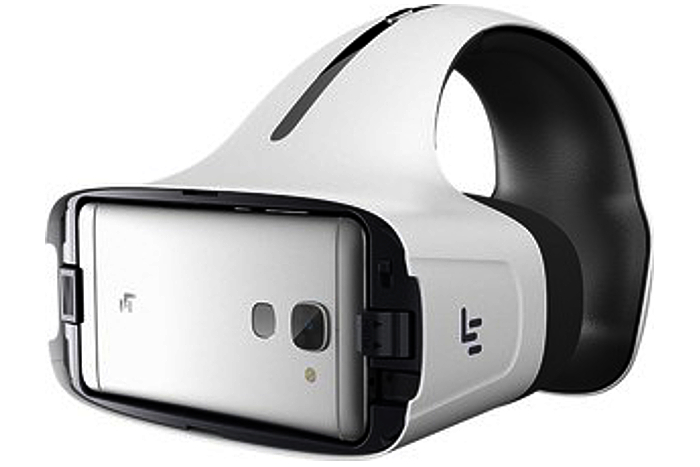
Like Samsung’s Gear VR setup, the upcoming ExploreVR headset from LeEco will depend on specific Android-based ecophones, another product revealed in LeEco’s announcement. According to the company, this headset will sport “an advanced ergonomic design and state-of-the-art optics.” The software development kit powering the compatible apps will be based on Qualcomm’s Snapdragon VR SDK, indicating that the ecophones themselves will be powered by Snapdragon processors (SoCs).
A further investigation into the announcement confirms two ecophones are on the way with Snapdragon chips: the Le Pro3 with a Snapdragon 821 chip and the Le S3 with a Snapdragon 652 chip. Just for kicks, here are the specs of each:
| Snapdragon 821 | Snapdragon 652 | |
| Core count: | Four “Kyro” 64-bit cores | Four Cortex A72 64-bit cores Four Cortex A53 64-bit cores |
| Process node: | 14nm | 28nm |
| Max speed: | 2.4GHz | 1.8GHz |
| GPU: | Adreno 530 | Adreno 510 |
| Max camera: | Up to 28MP 2x Spectra Camera ISP |
Up to 21MP |
| Display: | 3,840 x 2,160 native 3,840 x 2,160 external |
2,560 x 1,600 native 1,920 x 1,080 external |
| Modem: | Snapdragon X12 LTE | Snapdragon X8 LTE |
| Memory support: | LPDDR4 dual-channel @ 1,866MHz | LPDDR3 dual-channel @ 933MHz |
| Wi-Fi: | Qualcomm BIBE 802.11ac Bluetooth 4.1 |
Qualcomm VIVE 802.11ac Bluetooth 4.1 |
| Audio: | Qualcomm Aqstic | Qualcomm Immersive |
So that will probably be what powers the ExploreVR headset initially. If you are not familiar with how Gear VR works, users simply remove the protective shield off the back of the headset, plug in the supported Galaxy smartphone, and the installed software does all the rest. The Gear VR is powered by Oculus VR, the company behind the popular $600 Oculus Rift headset for the PC. Both Oculus and Samsung provide outlets to grab VR apps for the cheaper Gear VR version.
That said, the ExploreVR comes with a large, overhead band/arm that is attached to the top of the device and extends to the back of the head. By contrast, the Gear VR includes one elastic band that reaches from ear to ear, and another that connects the top of the unit to the horizontal elastic band at the back of the head.
The ExploreVR is also lined with memory foam that molds to the shape of your face. The headset relies on high-precision aspheric lenses and a proximity sensor that pauses content when the headset is removed and resumes when the headset is replaced. There is also a 10,000Hz IMU sensor that promises to cut down on head-tracking latency.
Just like the Gear VR, the ExploreVR headset requires the phone to sit in the compartment located at the front. Because the phone connects to the headset via the USB port, the Gear VR can power a touchpad, a Home button, a Back button, and the proximity sensor. Audio is supplied through the phone’s earphone jack although that’s reportedly not the case with ExploreVR, which supplies audio through Bluetooth. The new ecophones do not have an audio jack.
As for VR content, LeEco will follow in Samsung and Oculus VR’s footsteps by providing a dedicated marketplace called LeEco VR. The company did not state what will actually be offered at the time of the device’s launch, but presumably users will see Netflix, Hulu, and others jumping on board to provide virtual living room viewing. However, there is a good chance ExploreVR will utilize Google’s Daydream VR ecosystem as well.
LeEco said that it is launching its ecosystem of hardware and software in the U.S. on November 2. However, the company did not say if the ExploreVR headset would be included in that launch, or how much the unit will cost. The Gear VR headset sells for around $100, so we expect LeEco’s solution to be competitively priced.


